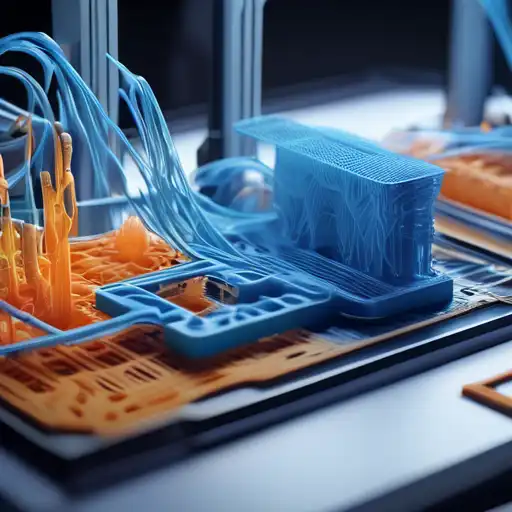Introduction to 3D Printing
3D printing, also known as additive manufacturing, is a process of creating three-dimensional objects from a digital file. This innovative technology builds objects layer by layer, offering unparalleled flexibility in design and manufacturing. From prototyping to production, 3D printing is revolutionizing industries worldwide.
The Process of 3D Printing
The journey of 3D printing begins with a digital model, typically created using computer-aided design (CAD) software. This model is then sliced into thin layers by specialized software, which the 3D printer reads to construct the object layer by layer. Materials used can range from plastics and metals to ceramics and even biological materials, depending on the application.
Applications of 3D Printing
3D printing has found applications in various fields, including healthcare, where it's used to create prosthetics and implants; aerospace, for lightweight components; and even in the food industry for intricate designs. The possibilities are endless, with new applications being discovered regularly.
Healthcare Innovations
In healthcare, 3D printing is making waves by enabling the production of customized prosthetics and implants tailored to individual patients. This not only improves comfort and functionality but also significantly reduces costs and production time.
Aerospace and Automotive
The aerospace and automotive industries benefit from 3D printing through the creation of lightweight, complex parts that are impossible to manufacture using traditional methods. This leads to more fuel-efficient vehicles and aircraft.
Benefits of 3D Printing
3D printing offers numerous advantages, including reduced waste, lower costs for small production runs, and the ability to produce complex designs that would be difficult or impossible to achieve otherwise. It also allows for rapid prototyping, speeding up the development process.
Challenges and Future Directions
Despite its many benefits, 3D printing faces challenges such as material limitations and the need for faster printing speeds. However, ongoing research and development are addressing these issues, paving the way for even broader adoption of this transformative technology.
Conclusion
3D printing is undeniably shaping the future of manufacturing, healthcare, and beyond. As technology advances, we can expect to see even more innovative applications and improvements in speed, materials, and accessibility. The future is being built layer by layer, and 3D printing is at the forefront of this exciting journey.
For more insights into the latest in technology and innovation, explore our technology section.
